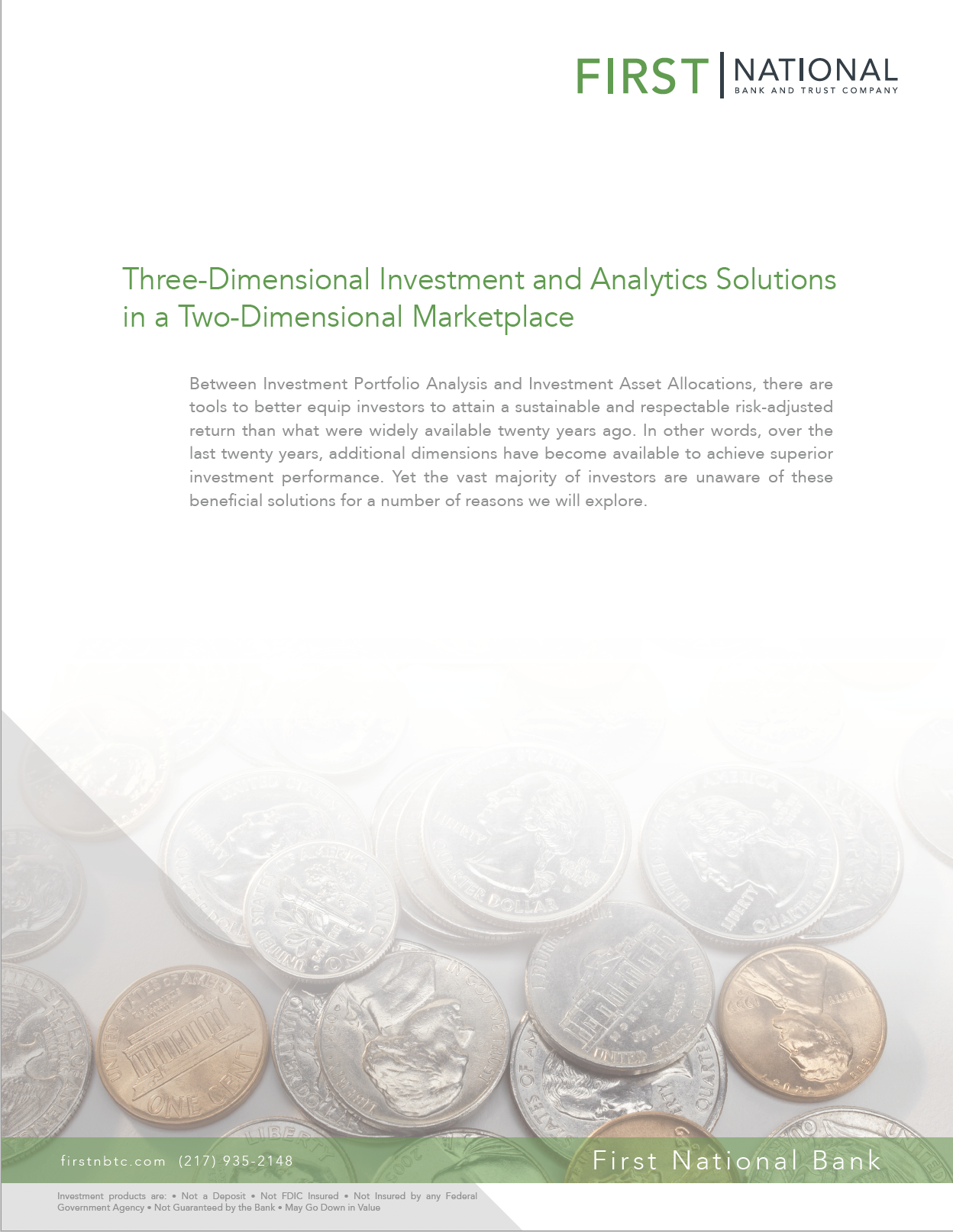Between Investment Portfolio Analysis and Investment Asset Allocations, there are tools to better equip investors to attain a sustainable and respectable risk-adjusted return than what were widely available twenty years ago. In other words, over the last twenty years, additional dimensions have become available to achieve superior investment* performance. Yet the vast majority of investors are unaware of these beneficial solutions for a number of reasons we will explore.
*Investment products are: Not a Deposit, Not FDIC Insured, Not Insured by any Federal Government Agency, Not Guaranteed by the Bank, May Go Down in Value
To download our free white paper, fill out the form below!

First Dimension: Return
The most commonly used dimension of investment analysis is one everyone is familiar with: return on investment. This answers the question: “How much did I receive in compensation for the risk I took?” While determining return is usually straightforward, determining the quotient for risk is more ambiguous.
Second Dimension: Standard Deviation
The second dimension of portfolio analysis is the quotient for risk most frequently used by the mutual fund industry: standard deviation. While numerous investment houses use standard deviation in their marketing materials, few investors and advisors know its true definition. Standard deviation measures an investment’s dispersion of returns from its average return. In other words, it’s a measure of how widely scattered returns tend to be from the average return.
Third Dimension: Downside Risk
The third dimension of portfolio analysis is very seldom used in the retail investment community, yet is commonly used by hedge funds and institutional investors; it is Conditional Value at Risk (CVaR).

